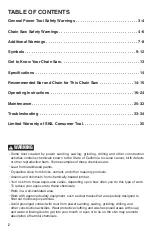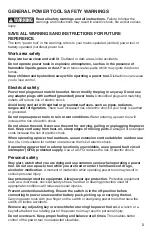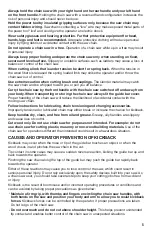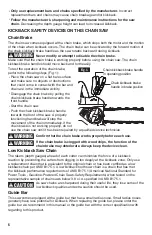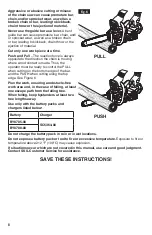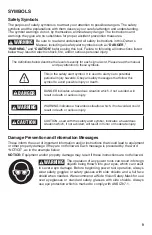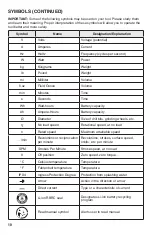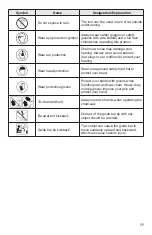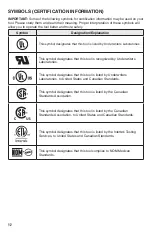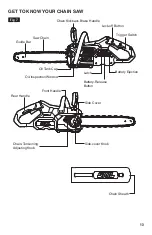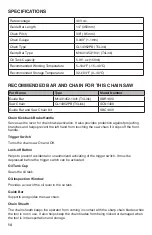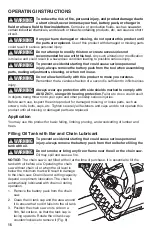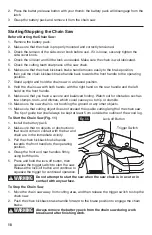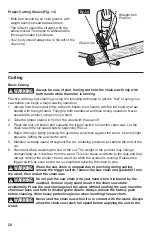
7
ADDITIONAL WARNINGS
A chain saw is intended for two-handed use
(Fig .2) . Serious injury to the operator, helpers,
and/or bystanders can result from one-handed
operation.
Make sure that the area in which you are
cutting is free from obstructions . Do not let
the nose of the guide bar contact a log, branch,
fence, or any other obstruction that could be hit
while you are operating the saw.
Always cut with the unit running at full
speed . Fully squeeze the switch trigger and
maintain cutting speed.
With a basic understanding of kickback,
you can reduce or eliminate the element
of surprise (Fig .3 .4 .5) . Sudden surprise
contributes to accidents.
Fig. 3
Rotational
Kickback
Fig. 4
Kickback
Danger Zone
Keep proper footing and balance at all
times .
Avoid unintentional contact with the sta-
tionary saw chain or guide bar rails . These
can be very sharp. Always wear gloves and
long pants or chaps when handling the chain
saw, saw chain, or guide bar.
Never operate a chain saw that is damaged
or improperly adjusted or that is not com-
pletely and securely assembled . Be sure that
the saw chain stops moving when the trigger
switch is released.
Do not incinerate the appliance even if it is
severely damaged . The batteries can explode
in a fire.
Inspect the work piece for nails, wire, or other foreign objects prior to cutting .
When bucking, secure the work piece prior to cutting . When felling or pruning, identify
and secure hazardous branches .
Fig. 2
Fig. 5
Linear Kickback
Pinch
Kickback


